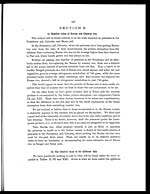Medicine - Institutions > Army health reports and medical documents > Scientific memoirs by officers of the Medical and Sanitary Departments of the Government of India > Number 37 - Investigations on Bengal jail dietaries > Part I > Chapter II - Nutritive value of Bengal jail dietaries
(168) Page 158
Download files
Individual page:
Thumbnail gallery: Grid view | List view

158
quantity, there appears to be very little difference in the amount of protein absorp-
tion from diets containing different dals, with the exception of gram dal. This con-
tains a much lower percentage of protein than the other types, and its protein does
not appear to be so easily absorbed. Any difference that exists in the protein
absorption of the different dals is, in all probability, due to a difference in the
relative difficulty of thoroughly cooking them.
The cooking of dals and of the different constituents of the dietaries is a most
important question, and one we have been unable to touch; but there can be
no doubt that the very deficient protein absorption from the jail dietaries is
intimately connected with the way in which the food is prepared.
(iii) The relative values of wheat and makkai ata.
The relative values of these two food-stuffs have already been fully discussed.
When 12 ozs. of makkai ata are given in place of 10 ozs. of wheat ata we found that
it made an average difference of about one gramme of nitrogen in the amounts
absorbed from the two diets with varying quantities of rice. This works out to
over 10 per cent. of a decrease in the of nitrogenous metabolism. When
equal quantities of makkai and wheat ata are given in substitution for one another
(Buxar jail) we saw that the level of protein metabolism was decreased 1.6 grms.
on the average, the makkai ata being used with varying quantities of rice. On
contrasting, however, the proportion of protein of makkai with that of wheat
ata, in a diet containing 10 ozs. of each, we obtain a full explanation of the lower
absorption from makkai ata: the protein of makkai ata is to that of wheat ata as
9.55: 12.24, i.e., as 1: 1.2, and we found that under the same conditions the average
absorption from a diet containing makkai was to that of a diet containing wheat
as 8.03: 9.69, i.e., as 1: 1.2 (see Charts III and V).
It follows from this that the protein of makkai ata is, under the same condi-
tions, as well' assimilated as that of wheat ata. This is an important result,
as it is generally stated that makkai is much less easily absorbed than wheat how-
ever, our investigations do not bear out that contention, but show, on the contrary,
that practically the same percentage of the protein of the two food-stuffs is
absorbed when they are given under the same conditions.
The fact that the ratio of the percentages of the protein of makkai ata and
wheat ata tallies with the ratio of absorption of those proteins affords a valuable
check on the accuracy of the figures on which the charts are founded.
We present on Chart XIV composite curves obtained by averaging the results
of the investigation carried out in Buxar and Bhagulpur jails on diets of makkai
Set display mode to: Large image | Zoom image | Transcription
Images and transcriptions on this page, including medium image downloads, may be used under the Creative Commons Attribution 4.0 International Licence unless otherwise stated. ![]()
| Permanent URL | https://digital.nls.uk/75033219 |
|---|




